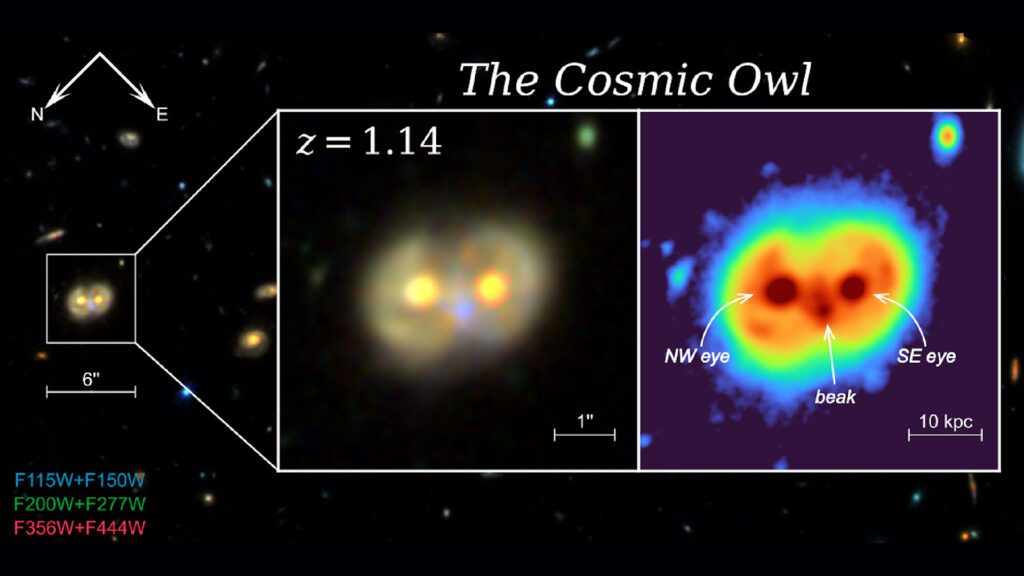The James Webb Space Telescope (JWST) has identified a unique astronomical formation dubbed “Cosmic Owl,” resulting from the rare collision of two ring galaxies. This discovery, highlighted in a preprint study by Mingyu Li and colleagues, reveals that the galaxies’ core resembles an owl’s face, with dense concentrations of old stars and supermassive black holes acting as its eyes.
Ring galaxies are exceedingly rare, making up only 0.01% of all known galaxies. The pair identified by JWST is both small, roughly 26,000 light years in diameter, and exhibits active galactic nuclei due to their black holes efficiently pulling in surrounding matter.
The collision creates a “beak” region where shock waves and a significant molecular gas reservoir foster intense star formation, turning this area into a “stellar nursery.” Initial estimations suggest the collision occurred about 38 million years ago.
Researchers emphasize that the “Cosmic Owl” serves as an exceptional natural laboratory for studying galactic evolution processes, including the interactions of gas and stars during collisions. This phenomenon may offer insights into rapid star formation mechanisms in the early universe. Further studies will focus on the conditions that produced this striking formation, continuing JWST’s legacy of revealing odd astronomical phenomena.
Source link


